ENVS tab in the upper-right of the Lab console to expand the Environment Manager sidebar and view
a list of your currently installed environments. The qBraid “Default” Python environment is pre-installed for all users.
Install environment
- In the Environment Manager sidebar, click Add to view the environments available to install.
- Environments are arranged in groups. Navigate to the correct environment group such as Qiskit, Pennylane, etc and click to view environments present inside that group.
- Choose an environment, expand its panel, and click Install. Once the installation has started, the panel is moved to the Environments tab. Click Browse Environments to return to the Environments tab and view its progress.
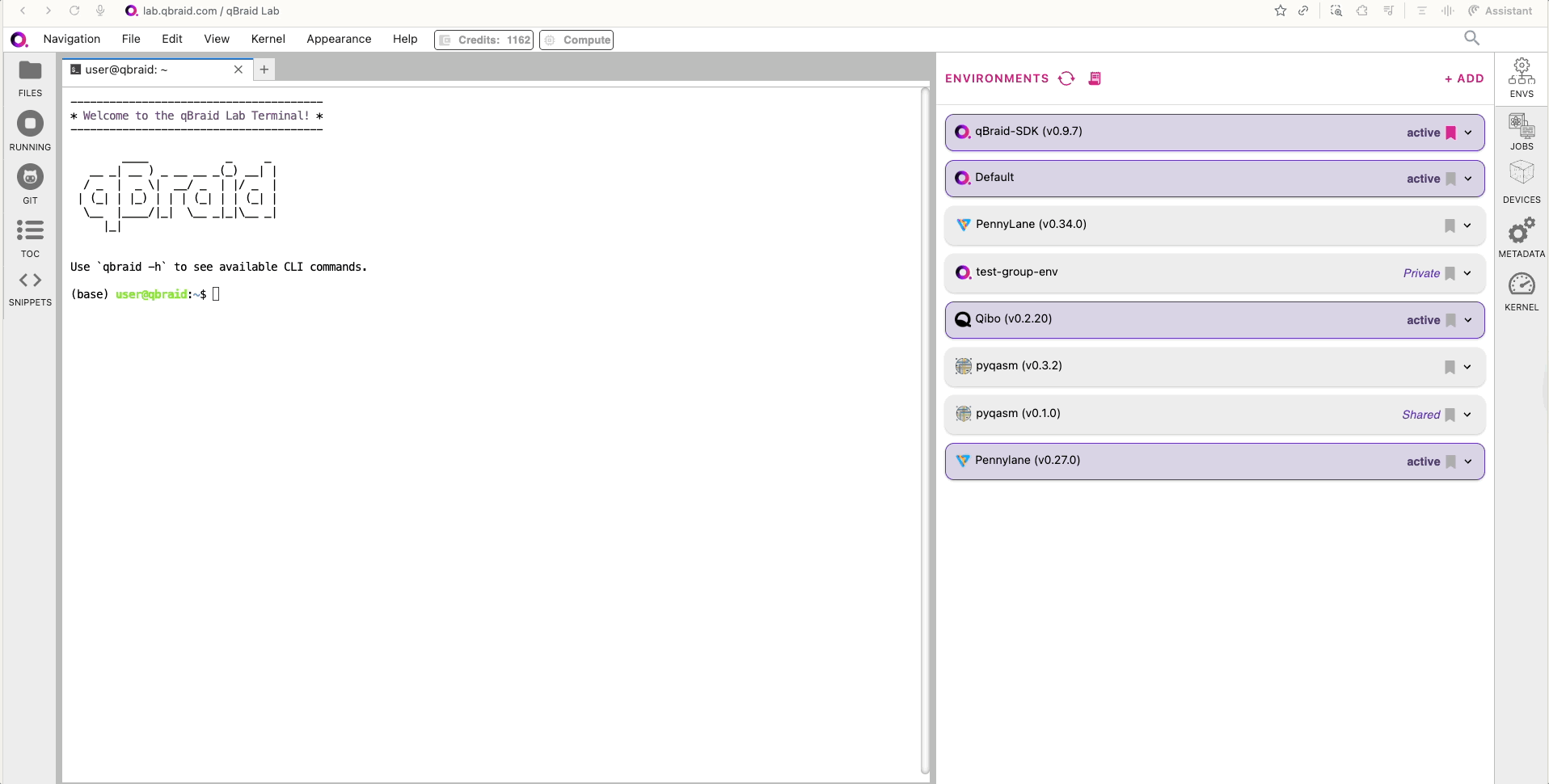
- When the installation is complete, the environment panel’s action button will switch from Installing… to Add kernel.
- You can also choose to filter based on the Package or Subject Matter groups. The Package button filters environments based on the primary quantum software package they support, while the Subject Matter button filters environments based on the quantum computing domain or application area they are designed for.
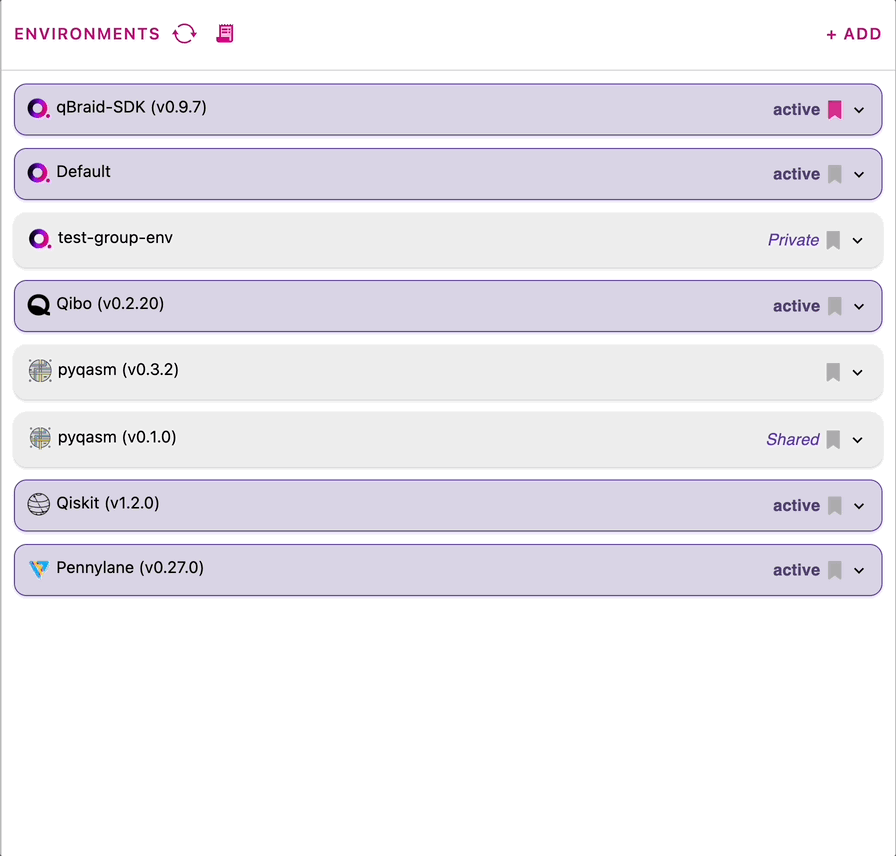
Discover via access code
Environments shared via access code are not publicly listed. To install one of these private environments, first enter the access code in the “Discover via access code” field and click the ”+” button. This will add the environment to your sidebar. You can then enter the environment name in the search bar or scroll to find it, and proceed with step 2 above to install it as usual. If the environment doesn’t appear in search results after entering the access code, click Browse Environments to go back to the main sidebar, click the Refresh icon, and then click Add to return to the search page and browse for the environment again. If the issue persists, ensure that you’ve entered the correct access code and are searching for the correct environment name. If you continue to experience problems, please contact our support team.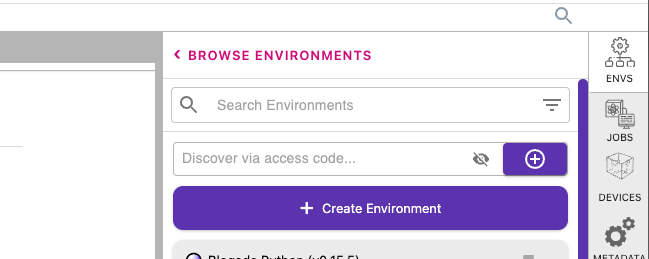
Create environment
- In the Environment Manager sidebar, click Add, then click Create Environment.
-
Give your custom environment a name, description, add tags, upload a logo, and specify any packages to install using
a
requirements.txtformat.
- Once the environment has been created and any package installations have finished, the environment panel’s action button will switch from Installing… to Add kernel, and the installed packages number will be updated.
- Click on More to verify/view the environment’s list of installed packages. You can use the search bar or scroll through the Python package (pip) list to find the exact versions of all packages and package dependencies that were installed. From the More pop-out, you can also install additional packages, remove packages, add/delete tags, and edit the environment’s description.
Clone environment
You can create a custom environment based on an existing one by cloning it. Clicking the Clone button will automatically populate the
requirements.txt file and other environment metadata in the “Custom Environment” form. This is useful, for example, if you want to make
and share changes to an environment you don’t own.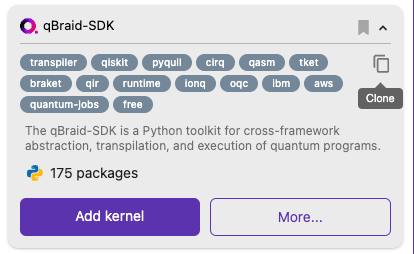
Share environment
In qBraid Lab, you can share your custom environments with other users. This will make your environment visible under their Add environment list. They can then install it, and run code using an exact copy of your environment. This includes support for quantum jobs and any additional configurations. To share a custom environment, first click the More button in the drop-down to open the environment editor. Then, under ‘Share Environment’, enter the qBraid user email, and click Share. Alternatively, you can select Generate Access Code to create a unique access code. Anyone with this code will be able to discover and install the environment with read-only access.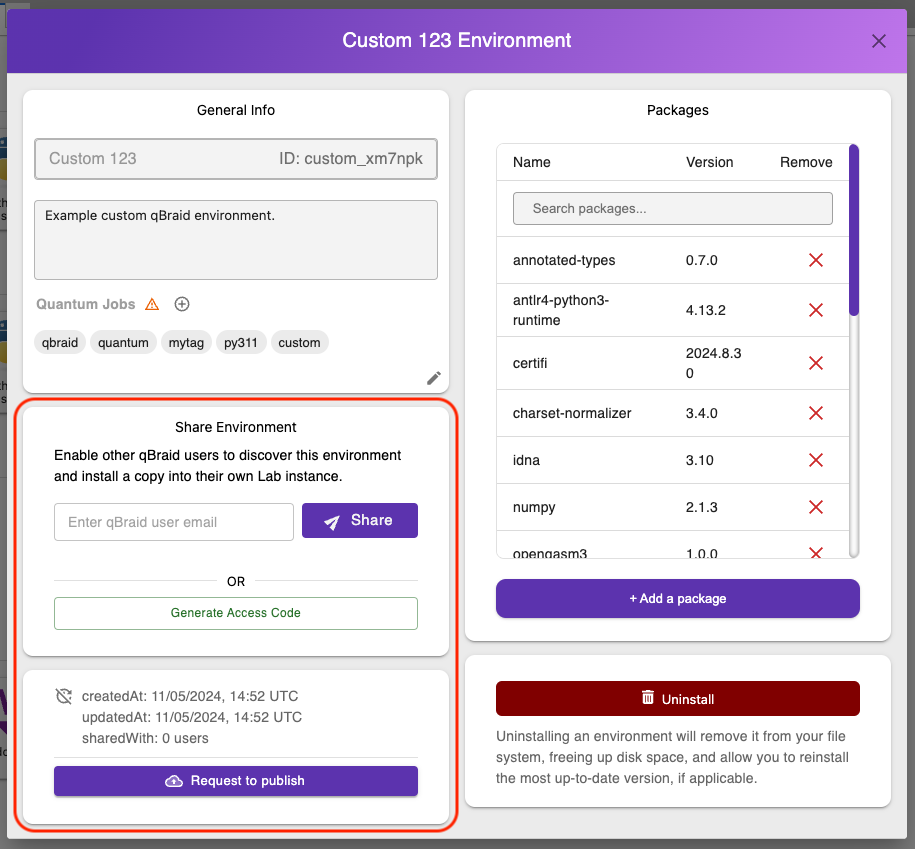
Publish environment
Make your custom environment accessible to the entire qBraid ecosystem by submitting a publish request. Once you’ve configured your environment to meet your specifications, open the environment editor using the More button and select Request to publish. A qBraid admin will review and test your environment as needed, providing feedback if adjustments are required. Once approved, the environment will be made public, and ownership will be transferred to qBraid.Uninstall / cancel install environment
To uninstall an environment or cancel the installation of an environment, click on More, and then Uninstall or Cancel Installation.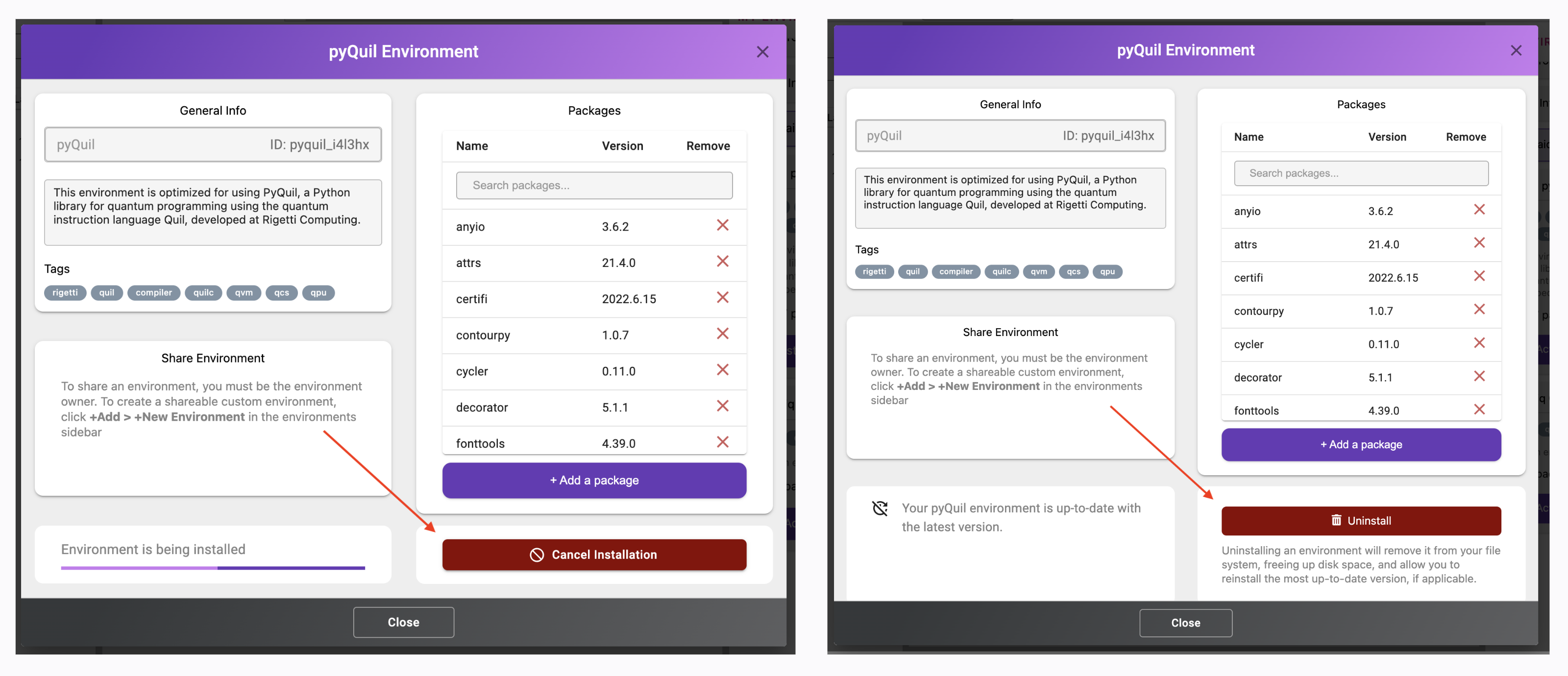
Install new package
Find the environment into which you want to install the package, expand the environment panel using the carrot drop-down, and then click More. At the bottom of the Python packages list, click Add a package. Type in the exact name of the package you wish to install into the “Add package…” search bar, and then hitEnter (or click the search icon on the right). This will do a direct search through PyPI, and return the
latest version available to install. To accept, click on the package, and then click Add.
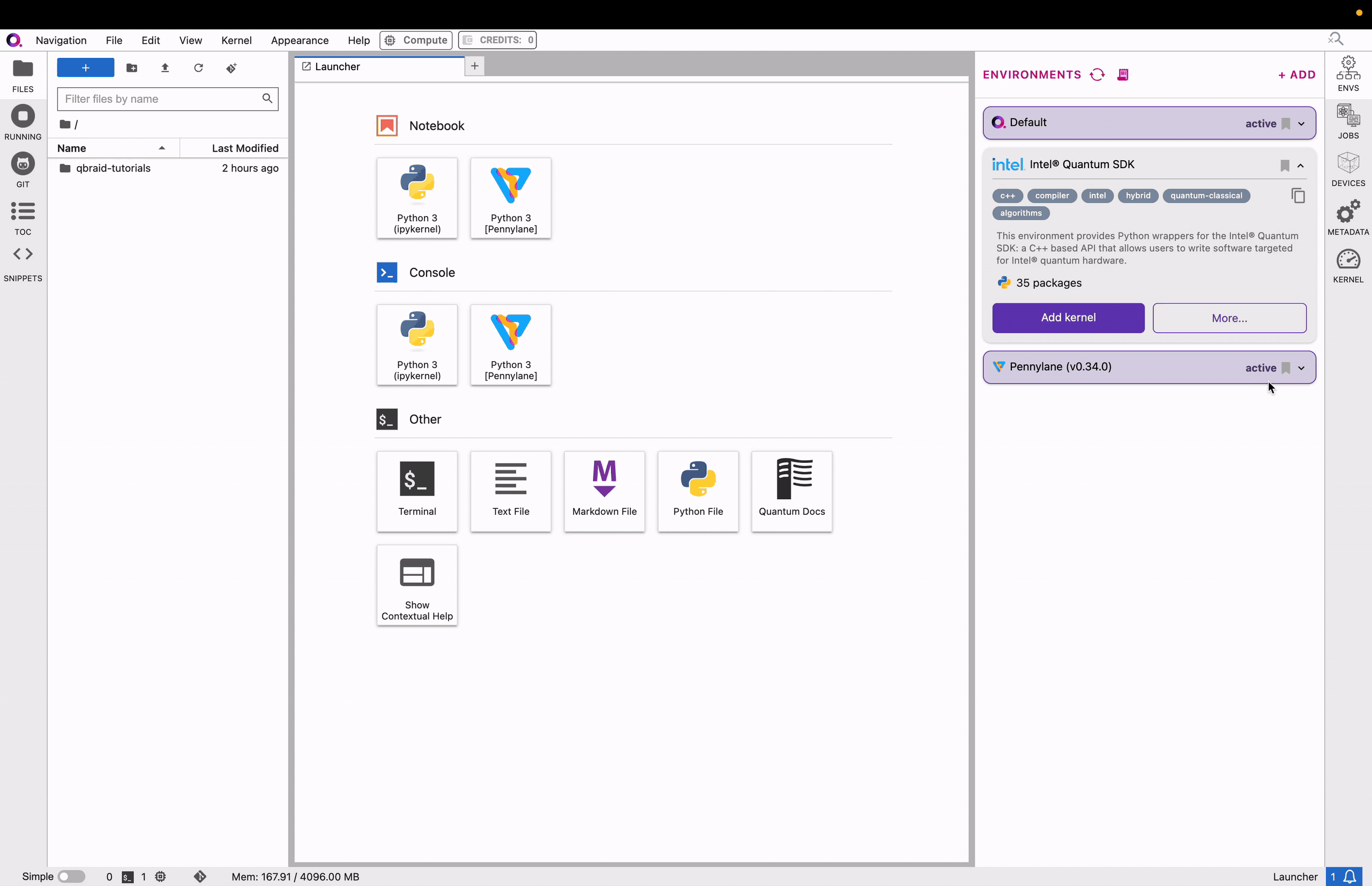
Activate environment (kernel)
Clicking Add kernel creates a new ipykernel, see Add/remove kernels for more.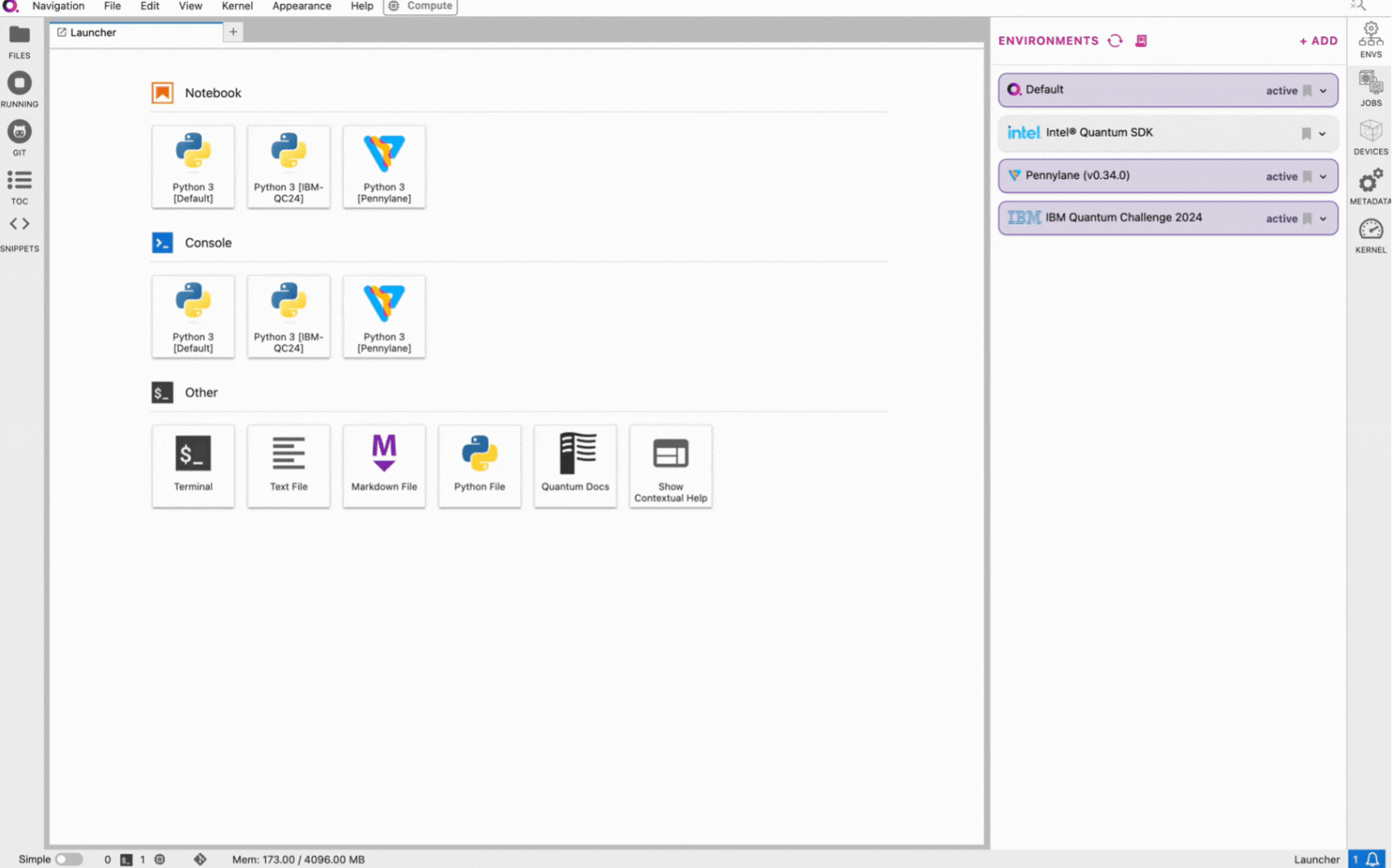
Featured environments
- Pennylane Lighting GPU: Environment for developing with the Pennylane quantum machine learning library with support for GPU-accelerated circuit simulation.
- Qiskit Aer GPU: Environment for developing with Qiskit Aer using GPU supported simulators: statevector, density matrix, and unitary.
- Bloqade: Environment and dedicated qBraid Lab instance for developing with Bloqade: an SDK for quantum computation and quantum dynamics based on neutral-atom architectures, developed by QuEra.
- Intel® Quantum SDK: Environment for developing with the Intel Quantum SDK, a C++ based API that allows users to write software targeted for Intel quantum hardware.
- Fire Opal: Environment for developing with Fire Opal, a Python package containing a large suite of error suppression techniques intended to improve the quality of quantum algorithm results.
Permissions
- Environment Manager features like install, create, clone, and share are available exclusively to Standard and Pro users.
- Advanced features, such as publish, require an Enterprise-level subscription or partnership.
- Access to certain featured environments is limited to certain user groups or organizations.
- Additional access to any of these features can be granted via access key.
